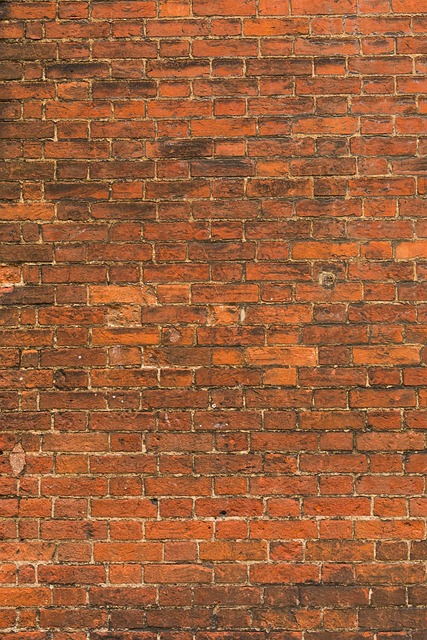Grout stains in kitchens and bathrooms require targeted removal methods based on stain type (water, oil, dirt). Pre-treatment involves clearing debris and selecting appropriate cleaners. Safe, enzyme-based or natural acid grout cleaners are recommended for high-traffic areas. A simple homemade mixture of vinegar and water, baking soda, and a grout brush effectively removes stains without damaging grout. Prompt action, gentle cleaning, testing solutions, and regular maintenance prevent future stains.
Understanding Grout Stains: Causes and Types

Grout stains can be a common issue in kitchens and bathrooms, often appearing as discolourations along the joints between tiles. Understanding the causes and types of these stains is the first step in effectively removing them. Grout lines, due to their porous nature, are susceptible to absorbing liquids, such as coffee, tea, wine, or even water from cleaning products, leading to unsightly stains. These substances can penetrate the grout, causing discolouration over time.
There are several types of grout stains, each requiring a specific approach for removal. For example, water stains may be caused by high humidity or leaks and can be addressed with appropriate degreasers and bleaches. Oil-based stains, often from cooking oils or cosmetic products, might need stronger solvents or even specialized enzymatic cleaners. Stains from dirt and grime accumulation may require a thorough cleaning with scrubbers and a pressure washer for the best results in removing grout stains.
Pre-Treatment: Preparing Your Grout for Cleaning

Before diving into the cleaning process, proper pre-treatment is essential to effectively remove grout stains. Start by sweeping or vacuuming the floor to eliminate any loose debris or dirt that might hinder the cleaning agent’s penetration. Then, identify the type of stain and choose an appropriate cleaner accordingly. Apply a small amount of the chosen product directly to the stained grout lines, following the manufacturer’s instructions for dilution if needed.
Let the cleaner sit for a few minutes, allowing it to penetrate the grout and break down the stains. This step is crucial in ensuring that your cleaning effort is not in vain; it prepares the grout for optimal stain removal. In addition, it prevents the reabsorption of dirt and grime into the grout lines after cleaning.
Choosing the Right Cleaning Agents

When it comes to removing grout stains, especially in high-traffic areas like kitchens and bathrooms, selecting the right cleaning agents is paramount. The market offers a plethora of options, but not all are created equal. For effective stain removal from grout lines, opt for powerful yet safe grout cleaners designed specifically for these challenging surfaces. Avoid using harsh chemicals that could damage the grout or surrounding tiles.
Consider products formulated with enzymes or natural acids that effectively break down and dissolve stubborn stains. These gentle yet potent agents penetrate deep into the grout lines, removing dirt, mold, and mildew without causing any adverse effects. Always follow the manufacturer’s instructions for safe and efficient removal of stains from grout lines, ensuring a sparkling clean result.
Step-by-Step Guide to Removing Stains

Removing stains from grout lines in kitchens and bathrooms can seem daunting, but with a few simple steps, you can restore your tile’s original sparkle. Start by identifying the type of stain—from mold and mildew to hard water spots or food residue—as this will determine your cleaning approach. Gather your tools: a sponge, white vinegar, baking soda, a grout brush, and an old cloth.
First, mix equal parts white vinegar and water in a spray bottle. Spray the mixture directly onto the stained grout lines, letting it sit for about 15 minutes to soften and break down the stain. Next, sprinkle a generous amount of baking soda over the affected area. Using your grout brush, gently scrub the mixture into the grout, applying firm but gentle pressure. Rinse thoroughly with warm water, using your cloth to wipe away any residue. Repeat if necessary until the stain is gone.
Common Mistakes to Avoid During Stain Removal

When tackling grout stain removal, there are several common mistakes that homeowners often make, which can hinder effective cleaning and lead to further discolouration. One of the biggest blunders is postponing the cleaning process. Grout stains only get more difficult to remove over time, as dirt and grime set in. It’s best to act swiftly when you notice a stain, as delay could result in more extensive damage.
Another mistake is using aggressive cleaning methods or the wrong products. Using harsh chemicals or abrasive scrubbers can damage the grout itself and even etch the surfaces. Always opt for gentle, pH-neutral cleaners designed specifically for grout stain removal. Testing any cleaning solution on a small, discreet area first is also advisable to ensure it won’t cause discolouration or harm the grout’s finish.
Maintenance Tips: Preventing Future Grout Stains

Regular maintenance is key to preventing future grout stain issues. Keeping your grout lines clean requires a consistent effort, but it’s not as daunting as it may seem. Start by making it a habit to wipe down surfaces after each meal and prevent spills immediately. This simple step can go a long way in avoiding water damage and staining.
Additionally, consider using waterproof seals on new grout installations. These products create a protective barrier, repelling liquids and making future stain removal much easier. Regularly deep cleaning your kitchen and bathroom grout with appropriate cleaning solutions will also help maintain its integrity and keep it looking fresh.
